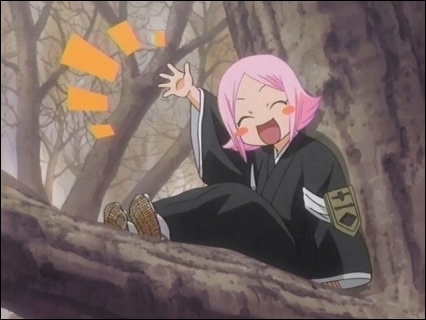[MoCH] Festivals in September
 •
by
•
by sto kila bazuki


皆さんこんにちわ
First of all I would like to thank Nicolas for letting me be Minister of Culture and History this month and I hope I'll meet his expectations. In the past I have worked as vMoCH, History Director, Minister of Information and Minister of Communications, so I'm pretty sure I can handle this job. The MoCH team is pretty much similar except that now Nanashi Senshi is vice minister.
Were looking for History Director, someone to help keep eJapan's eRepublik wiki pages updated and current.

As the summer comes to an end, most people think that the festival season also comes to an end.
Owara Kaze-no-Bon Matsuri (Toyama, 1-st to 3-rd September)
lit: Festival of the wind

This is a traditional folk event to appease the wind and pray for a bountiful crop, and is held every year for three days from September 1st. It corresponds to the 210th day from the first day of spring according to the traditional Japanese calendar and is considered a day often beset by calamities when farmers are frequently struck by typhoons. Although there are many explanations about its origins, it is generally believed that the Bon ritual of paying homage to ancestors merged with a festival praying for a rich harvest.

All the men and women of the town stop working during the days of the festival. They light small lampstands covered with paper and dance all night while singing the "Ecchu Owara Bushi"which is a folk song handed down in Yatsuo-machi town, Toyama Prefecture. Accompaniment is provided by three-stringed Japanese musical instruments, smaller Japanese stringed instruments and drums. The women all wear the same type of cotton summer kimono with black sashes and hats made by braiding straw, while the men wear short jackets and amigasa hats. The dance is performed in an area extending some 3 kilometers from north to south, and the 11 Owara district sub-branches, each forming a unit, dance on designated stages as they travel around the area.

It used to be a local folk festival for the inhabitants of the town. However, word about the unique melancholic melodies and mysterious dance has spread, and in recent years it has been drawing large numbers of spectators from all over the country.
Kishiwada Danjiri Matsuri (Osaka, 13-th to 14-th September)
The Kishiwada Danjiri Matsuri, held in Kishiwada, Osaka, is one of the most famous Danjiri festivals in Japan.
The festival began in 1703 when the Daimyo of Kishiwada, Okabe Nagayasu (岡部 長泰), prayed to Shinto gods for an abundant harvest at Fushimi Inari-taisha, Kyoto.

The Danjiri festival is divided principally into two festivals. The first is held in September and is the more famous of the two. The second occurs in October, is less famous but involves more Danjiri. The September Festival is itself divided in two. Again, the more famous is the Kishiwada danjiri centering around the Castle and runs from the Nankai line down to the seaside. The other Danjiri festival occurs in Haruki Town and centres around Nankai Haruki Station. The September Festival involves 34 Danjiri. In October the towns between the Nankai line and the mountains hold their own Danjiri Festivals. These involve 47 Danjiri and centre around the JR stations of Kumeda, Shimomatsu and Higashi-Kishiwada.

The large decorative portable shrines, called Danjiri, are carried by intoxicated individuals at break-neck speeds through the city streets. Sometimes the shrines crash into each other, or into the crowds. When the narrow 5 ton carts try to turn 90 degrees at high speeds, they are very likely to tip over. This has happened on more than one occasion, resulting in serious injury and even death. Deaths are not uncommon during the Kishiwada Danjiri Festival, making the festival one of the most dangerous in Japan. This has never effected it’s popularity in the last 3 centuries.


MoCH team:
Minister of Culture & History: sto kila bazuki
Vice Minister of Culture & History: Nanashi Senshi
History Director:
Graphics Director: Turt037



Comments
v
V
V!
Though a bit busy atm. with MoFA-work, so I'll read it later.
yeah 11 regiment with Zaraki is the best 🙂
v